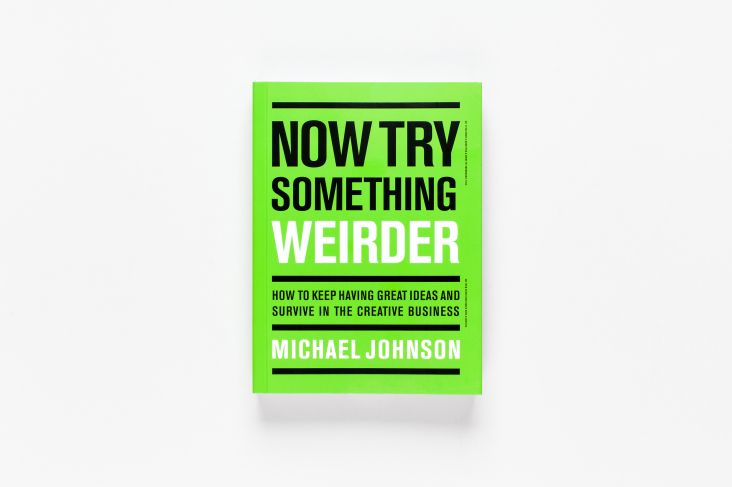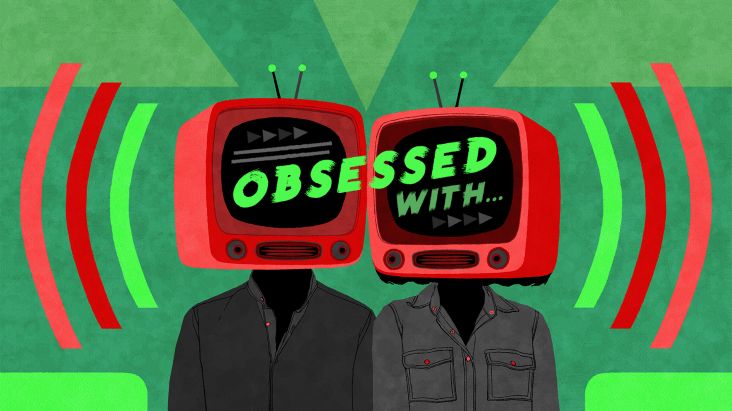How to set your freelance rates
Are you going freelance? Then you now run your own business: congratulations! But many creative freelancers don’t think in those terms. They often don’t like to think about money at all.

Image licensed via Adobe Stock
It’s a lifestyle thing. You love your work, and getting paid for it remains secondary. But that’s a shame. Because as a result, you may be undercharging, and losing out on thousands, even tens of thousands, every year.
So how should you set your freelance rates and get what you rightfully deserve for your hard work and talent?
There’s no set way to do so, as every freelancer is different and what works for one won’t necessarily work for another. But there are certain core principles that work across the board.
In this article, we’ll draw out key lessons when setting your prices, starting with the basics, and building up to more advanced approaches. Follow these tips, and there’s every chance you can get substantially more money while still doing the same number of hours.
Gather original data
It’s natural when setting your prices to find out what the market rate is for your freelance work. But that’s not always super-easy to find out.
There are many freelance pay surveys on the web, and they’re useful for getting a broad overview of the industry as a whole. But they’re not generally extensive or complex enough to offer the kind of fine nuance you need to calculate rates at an individual, specific level.
James Kirkup, co-founder of London branding agency Studio Beuro, has an alternative strategy that cuts to the chase. "Ask other designers," he suggests. "The nice ones will tell you how much they're on."
While he’s not suggesting you copy their rates, this should help you come up with your own, because you’ll be able to compare factors such as your level of skill and experience, location, portfolio and client base with theirs directly.
Assess what you need
When you’re starting, before you establish your ideal rate, you need to consider the minimum amount you need to survive without plummeting into debt. That might sound like a no-brainer but data such as the 2018-2019 survey, taken by Ben the Illustrator, suggests that many creatives are not achieving that in practice.
Mounting debt is a cruel beast that can drag you down and mar your life for entire decades. So if you’re at the start of your freelance career, don’t just blithely think: ‘Oh, things will pick up later’. Instead, sit down and calculate carefully precisely what you need to keep the lights on, the rent paid, and your stomach fed, before you end up getting in serious trouble.
Negotiate what you can get
While it’s essential to get enough to live on, that shouldn’t, of course, be your primary goal as a freelancer. The joy of independent working is that there are no theoretical limitations on what you can earn, so you should do everything in your power to maximise your income. (No one else is going to do it for you.)
If you’re a recent graduate, you can’t be too pushy, but once you’ve got a few years under your belt, you certainly should start moving your rates up a notch regularly, with both new and regular clients.
For some freelancers, that means taking an important step psychologically. Many freelancers assume they should be earning similar amounts to those in salaried jobs, but quite frankly, that’s nonsense. If the client could get a salaried employee to do the work, they would; the fact that they’re coming to you means you have something unique to offer. So you need to double-down on that and use it to negotiate yourself a better deal.
You do so, essentially, by convincing the client that you’re far and away the best person for the project, and that opting for a cheaper freelancer would be a false economy. That, in turn, means continuously working on improving everything in your armoury, from sprucing up your portfolio to preparing better for meetings.
But even if that isn’t always enough. Even if a client does secretly prefer you, some are so bottom-line focused that they’ll try to lowball you anyway.
It’s at this point that it pays to be tough. “If someone insists on a non-acceptable fee, respect yourself and learn to say ‘No’,” advises illustrator and design consultant Davor Bakara, “Laugh out loud at any sentence beginning with ‘but’ and containing ‘exposure’. Add a ‘No way!’.”
Ultimately, that means preparing to walk away and lose the client forever. But if they’re a cheapskate, where’s the harm? Talented, reliable freelancers are always in demand, so there'll be plenty of other fish in that particular sea. And you never know, that cheapskate client may return later with a better offer. If you don’t try, you’ll never know.
Hourly charging is a psychological minefield
The question of whether to bill hourly or per-project is a thorny one, with strong feelings on both sides. The web is filled with blog posts arguing that the latter is the ‘one true way’, and the writers are no doubt sincere. But in all honesty, if that were the case, then everyone would be doing it.
In truth, some successful creatives charge hourly, some per-project, and some even take a hybrid approach. So it’s less a question of ‘which is right’, than ‘which is right for you?’
That said, we’d argue that as a rule of thumb, charging hourly is best avoided if possible. Because, on the whole, you’ll get less money as a result; for reasons that are deep-seated in human psychology.
Let’s take an example. Imagine you want to hire a high-class wedding photographer. You’ve found one that charges £2,000 for the day. You love the shots on their website, and it sounds like the going rate for a top pro. You agree to the price.
Now imagine reading that a photographer charges £250 per hour. Doesn’t that sound like a massive rip-off? And yet actually, for an eight-hour day, that works out as the same price.
This is ‘anchoring’ in full effect. It’s the principle that our brains see prices purely in comparison with other things we’re familiar with. In example one, you’re comparing the cost of wedding photographers, which is generally understood to be high (and rising), at least if you want someone decent. In example two, though, you instinctively compare the rate with the amount you earn yourself, which for most of us will be considerably lower than £250 an hour!
Of course, a wedding photographer is not just charging for the eight hours they’ll spend at the wedding. They need to take into account countless extra time and expenses, from travelling to the venue to retouching pictures and uploading to the website later. Not to mention the cost of equipment, website hosting, stationery – the list is endless.
Someone in a salaried job never has to worry about any of that. But none of that springs to mind when you first heard ‘£250 an hour’ because you’re too busy thinking ‘Are they taking the piss?’
What’s true for photographers equally applies to illustrators, designers, 3D artists. In every area of creativity, the time you spend creating is only ever a fraction of your total workload. So why would you charge for it in this way?
Other downsides to hourly charging
There are other downsides to charging on an hourly basis, too. Most notably, there are only so many hours in the day, and so if you charge hourly, the only way you can ever increase the amount you earn is to work for longer.
This approach also discourages you from working efficiently, points out Manchester-based design freelancer Mark Richardson, aka Superfried. “Hourly billing penalises anyone faster, which makes no sense,” he argues. “If I am able to do the same job twice as quick, should I only be paid half as much?”
Skye Kelly-Barrett, the founder of Roar Illustration Agency in London, agrees and sees it as an overly blunt tool. “An hourly or daily rate does not always take into consideration the project at hand, the company, the details, etc.,” she reasons. “Most people agree on a set amount of hours and then end up working more to get the work done, or even penalised for being quick.”
The downsides of per-project billing
It's for precisely these reasons that Gloucestershire-based copywriter Hollie Sherrington tends to charge on a per-project basis, rather than a daily or hourly rate.
“Not only is every project different, but there's so much more to the creative process than how many hours you put in,” she reasons. “The focus should always be on the result, not how long it took you to get there.”
So why doesn’t everyone do this? Because, in truth, per-project pricing is not always a walk in the park either.
One of the biggest benefits of charging a fixed cost for a project is the possibility that you’ll complete it quicker than you imagined. But the opposite also applies: if you take longer than expected, you’ll find yourself out of pocket.
This can happen for many reasons but is most often rooted in a breakdown in the client relationship. Sometimes what you deliver isn’t what they wanted, so they ask you to make revisions. And then more revisions. And then more. “Could you make the logo a little bigger?” We’ve all been there.
There’s also the problem of ‘scope creep’, where the client keeps adding extra tasks to your list. This is most often the case in already complex projects, such as web design, but even happens in more straightforward disciplines like illustration. “Didn’t we mention we needed a scaled-down version of the drawing for the mobile app?” they say innocently. “Sorry about that – it shouldn’t take too long, should it?”
Countless blog posts will tell you that the secret to avoiding this lies in drawing up watertight agreements with clients at the start of the process, setting out the scope for revisions and additions clearly and unambiguously, and sticking to the agreement throughout. And there’s a lot of truth, and good sense, to this.
But we’re also live in the real world, where real clients can be difficult, stakeholders multiple, uncommunicative and unbending, and accounts departments unwilling to pay up until every single box has been ticked.
Most freelancers are people-pleasers at heart, too, and no one wants a project to end in failure and recrimination, all for just “a few extra hours work” (even when those extra hours seriously start to add up).
All this means that, at the start of a project, your gut may well tell you: ‘I want to work with this client, I really think it’s going to be beneficial to my career, and hopefully it’ll be fun for both of us... but I don’t entirely trust them. So I think I’ll go for hourly, or daily, billing in this instance, because that way, if things go off the rails, at least I won’t be out of pocket’.
That decision may or may not to be the correct one; it’s just something you get a feel for throughout your career. But you certainly shouldn’t rule it out on a matter of principle.
And if you do go for per-project pricing, make sure you get all your ducks in a row. “I do a fixed price for a fixed spec; this works very well but only if you have a sufficiently detailed scope doc," says Derby-based web developer Pete Clark.
"I also explain how I handle additional requests before starting a project. The scope doc doesn't have to be too complex: I have a template I use for all projects. The time spent filling this in saves hours, and lost money, later on, so it’s always worth doing.”
Value-based pricing
Mark Richardson has one final piece of advice for creative freelancers: “Try to move towards value-based pricing,” he urges. “Price the client, not the project, charging for your expertise rather than your time.”
‘Value-based pricing’ is a phrase that’s launched a thousand blog posts, but it’s also often misunderstood. Indeed, many people use it to mean per-project pricing, although it’s something quite distinct.
We’ll explain it with an example. Imagine you’re a web designer asked to redesign an e-commerce website. In this case, the new functionality you’re adding should have quantifiable and estimable outcomes, in terms of increased sales. Crucially, this means you can cost the project, not in terms of how much work or time it will take, but how much money the client will make as a result.
There’s no hard and fast rule here, but if your work was, say, expected to contribute an extra £500,000 to the firm’s profit, then charging £50,000 for it might seem pretty reasonable, even if that’s way out of proportion to the time it takes to design.
It’s less obvious, of course, to see how value-based pricing could work in some disciplines. For instance, arguing that your cover illustration is likely to increase sales of The New York Times magazine beyond the norm would be tricky, unless of course, you’re Banksy.
But then, that’s the point of pricing in general: only by offering something that others are unable to can you “beat the market” and charge serious money for your work. And the more you can dig deep into how your client’s business functions and the way it makes money, as well as its overarching strategy and brand values, the better you’ll become at finding ways to add value and help boost its profits.
Blair Enn's book, 'Pricing Creativity: Profit Beyond the Billable Hour' breaks down the topic clearly and succinctly; to get a taster, listen to this podcast interview. But don’t get too caught up in the theory, because while it has a lot to offer, it’s not always the ‘magic bullet’ it’s made out to be.
As Pete Clark says: “Value-based seems great, but I've yet to find anyone in the real world actually doing it."
When to get paid
It's not just about how much you get paid, of course, but when you get paid. No one wants to wait around for months before they see a single penny.
“I charge an amount upfront – usually 50 per cent,” says Bristol-based food illustrator Tom Hovey. “This represents a commitment to the project from both sides; also acts as kill fee in case things go off track, which is covered in my work agreement.”
Leeds-based graphic designer and illustrator Graham Pilling does too. “I ask for half the money upfront on every job, even with my long-standing clients who I know to pay on time,” he explains. “What's great is sometimes those long-standing clients are so used to how we work, they pay me before I invoice them!”
If you've never thought of asking for part-payment up front, then we'd urge you to do so. No decent client is likely to say no, and it's often more comforting to them too, providing a certain sense that you're "locked-in" to the project and won't ditch them at a moment's notice.
If you're charging by the hour, you might consider asking for what is called a 'retainer'; essentially 'blocks of time' that the client pays upfront. You log your time accordingly and tell them when their time is up, and they need to pay more. With a good line of communication, it can be a great way of keeping both a project and the client's budget on track, so there are no nasty shocks for either of you at the end.
The importance of tracking your time
However you decide to bill your clients, you must track your time methodically and accurately. With hourly billing that's super-obvious, but even if you charge per-project, you need this information as it allows you to estimate better how long similar projects will take in future.
It's easy to lose sight of the time when you get "into the zone" on a project, and you don't want to be staring blankly at a sea of scribbled Post-it notes, weeks down the line, struggling to make sense of them. So it's wise to invest in a decent time-tracking app: here's a great selection to choose from.
Also, remember that time tracking is not just a list of start and stop times. You should also write out a clear explanation for each time entry, explaining what you did and why, plus double-checking your spelling and grammar in case the client ever needs to see it.
Keep it simple
There’s a lot of debate and controversy about how to price your freelance services, but its essence boils down to a few simple points.
In a competitive market, you have the choice of either being lowballed or making yourself unique and indispensable. That way, you can potentially get much higher rates for your work, although you’ll need to be a tough negotiator. Standing firm, and being willing to say no, are vital elements of this.
In terms of how to price, avoid hourly billing where possible: pricing per-project is likely to yield greater profits as long as you and the client can stay on the same page regarding outcomes and scope. In the absence of this, though, daily or hourly billing might be a better way to go. Either way, ask for some of the money upfront to keep your cash flow healthy and ensure goodwill on both sides.
Finally, the key to earning serious money usually lies in understanding a client’s core business and how you can add value to it. If you can add a lot of value – particularly if that is measurable and quantifiable – then the sky’s the limit when it comes to what you can potentially charge.
For further reading, check out: this advice on being a freelance illustrator from the AOI and 'Does value-based pricing live up to the hype?' by Benek Lisefski.

























